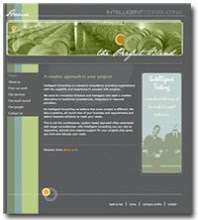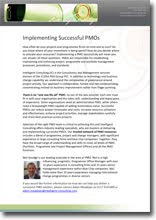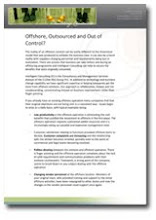In Part 1 of this blog series we established the importance of a company LinkedIn page; now, we can create implementation guidelines to ensure it is being optimised. As a general rule, your profile should produce relevant and interesting content that rewards followers for connecting with you. Adhering to the following 3 principles will hopefully aid you in maximising the effectiveness of your LinkedIn activity:
- Blogging
For the sceptics, blogging has quantifiable benefits too. 57% of companies have acquired at least one customer from a blog; primarily due to generating an increase in site visits and SEO, ultimately resulting in leads. It is important that employees understand the strategic benefits of blogging, as afeature will soon be available that allows all LinkedIn users to post their own blogs.
- Advertising
A company LinkedIn page is effectively an advert for your business; it is therefore paramount that it is visually engaging, up to date and content rich. It can be argued that promotion is most effective when the source appears to have no relation to the company, so if interesting content is shared or commented upon by a user this is perceived as a hugely authentic form of advertising.
Whilst the profile’s main picture will simply be your company logo, it is important to make the most of the banner at the top with content such as powerful imagery or a striking piece of promotional material. LinkedIn has unique means of advertise your page and business. These often include placing an individuals LinkedIn profile photo within the advert to draw peoples attention (as pictured). One of the most effective forms of this is a prompt to follow a company after you have visited their page.


Informative adverts, particularly job postings, are great for driving traffic to your page and obtaining new followers. This is even more effective when LinkedIn’s ‘target advertising’ features are utilised,enabling adverts to be tailored to specific audiences based on criteria including industry, seniority, job function and location. If a job posting or advert is relevant, or in some cases leads to a transaction (or job), a person is much more likely to follow your page.
- Integration
As well as advertising your company, your page has to advertise your brand’s various other formats and promote these. Firstly, ‘calls to action’ should be included to all of your social media outlets,usually in the form of logo banners, as this allows one-click access increasing the likelihood of a connection. Emails can also be used in this way and should utilise the business’ CRM database to target relevant recipients.
In addition, blogs and similar content posted from your LinkedIn should always be published on your website, as sites containing 401-1000 web pages get six times more leads than those with 51-100 pages. Connecting your blog to multiple social media outlets will also greatly increase traffic to your various platforms.
References:
- Webcast. Building Your Follower Ecosystem and What This Means for You. LinkedIn. July 22nd, 2014.
- Siofra Pratt, 7 Steps to LinkedIn Publishing Success. Social Talent. July 15th, 2014.
- Siofra Pratt, Jonathan Campbell. 12 Things to do after you publish a blog on LinkedIn. Social Talent. July 18th, 2014.
- Samantha Durant. 55 Reasons Blogging Creates 55% More Traffic. IMPACT. July 20th, 2012.










